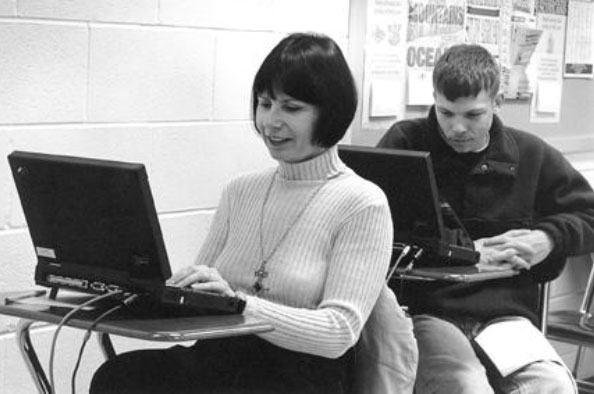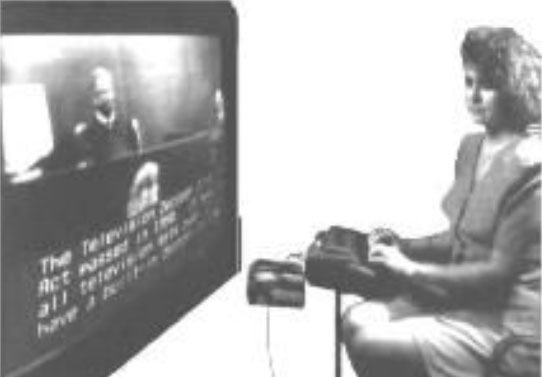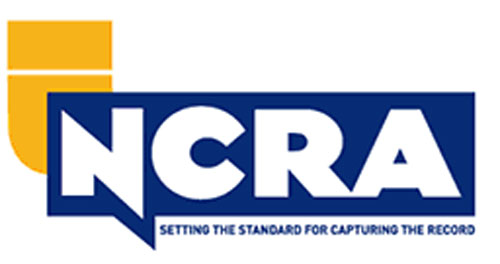<< Learning Center
Media Accessibility Information, Guidelines and Research
Captioning: Broadcast, Off-line, and Real-Time
By Mark J. Golden

An estimated 28 million deaf and hard of hearing Americans need access to television programming and daily activities now more than ever. How else would someone with hearing loss find out about the newest developments in a conflict overseas or a heightened terror alert? How would they participate in a town hall meeting or a religious service? For 90% of these Americans who don't know sign language, the answers are broadcast captioning and CART (Communication Access Real-time Translation).
The ever-growing demand for these services is being driven by two factors. First, the Telecommunications Act of 1996 mandates that all new television programming must be 100% captioned by 2006. Second, more and more people are discovering that these technologies allow members of the deaf and hard of hearing community to fully participate in their personal, educational, and civic lives. In order to accommodate the different situations where communication access is required, different forms of captioning are available. Broadcast captioning provides access to live television programming; offline captioning involves the addition of captions to prerecorded programs. CART or live-event captioning offers a more intimate experience where real-time captioning streams across a computer monitor or screen.
Broadcast Captioning
This is perhaps the most familiar real-time communication access tool. During a broadcast of the evening news, the newscasters' words run along the screen. According to captioning advocate Gary Robson, newscasts can be captioned using real-time, in which the whole broadcast is captioned or Electronic News Room (ENR) captioning, in which only the parts that have text for the TelePrompTer are captioned. Real-time captioning requires a unique combination of highly skilled professionals and the latest technology. A trained stenocaptioner that provides real-time captioning can translate the spoken word to text at over 250 words per minute at an accuracy level that exceeds 97 percent. The captioner types in phonetic shorthand notes that are instantly translated by computer into English text and synchronized with the broadcast. These captioners, who graduated from court reporting and captioning training programs, hone their skills by obtaining certification and meeting mandatory continuing education requirements.
Still, many TV stations rely on ENR rather than actual real-time captioning simply because it is free. ENR scripts the announcers' input into the TelePrompTer well before the broadcast. While better than a total absence of captioning, ENR denies deaf and hard of hearing people access to newscast programs. In addition to its incomplete captioning, ENR also may not capture what the newscaster says during the newscast, because newscasters may go off script. The Telecommunications Act amendments of 1996 created deadlines for broadcast and cable program providers was to reach a virtually 100 percent level of captioning for new programs in 2006. In addition, the four major, national broadcast networks; TV affiliates of these networks (in the top 25 TV markets); and national non-broadcast networks (e.g., cable) serving at least 50% of the total number of households subscribing to video programming services, cannot count news programming using ENR toward the captioning requirements.
Off-line Captioning

Off-line captioning is primarily used for prerecorded television programming, such as sitcoms and movies. An off-line captioner does not require the same training as a real-time captioner; they must simply have strong vocabulary and language skills. In most instances, the captioner receives the recorded material, creates the captions with a standard computer keyboard, and then places them on the videotape. The tape is then sent back to the broadcasting company for display. This can be a simple or rather complicated task, depending on the dynamics of the program.
Communication Access Real-time Translation (CART)

CART provides a complete translation of all spoken words and environmental sounds. This technology empowers consumers and lets them decide for themselves what information is important. A CART provider can do real-time captioning at religious services, conventions, public hearings, or in a classroom. Like a broadcast captioner, a CART provider is also a trained stenographic reporter who instantaneously converts spoken words of a sermon, seminar, testimony, or lecture into written text, which appears on a computer or is projected onto a screen.
CART not only provides a record of what is being discussed but also of the interaction within an environment, such as a question from a student to a professor or an exchange of witty banter. This allows the deaf or hard of hearing individual to be an active participant rather than just a silent observer. A CART provider can and will interrupt dialogue, for accuracy's sake, if he or she does not fully understand what was being said. In the CART environment, a purely verbatim record is not the goal, but rather a fully understandable record of the event for the individual who is relying upon the service for access. A real-time court reporter, working in the courtroom, is more concerned with what is being said than what it meant. That's why a joint task force formed by members of the American Judges Foundation and the National Court Reporters Foundation developed model guidelines for the provision of CART in the nation's courtrooms, available here (PDF). Rather than having an individual in need of communication access view the real-time court reporter's screen, the guidelines recommend that a CART provider be tasked solely with ensuring communication access for the person in need. In this way, the real-time court reporter can perform his or her primary task (preparing a complete, accurate, and secure record of the proceedings) while the CART provider can perform his or her primary task (ensuring full and effective communication access).
In classroom settings, other services are sometimes provided instead of CART, such as note takers. These alternatives do not provide a full translation of what is occurring, but provide a partial or summary display of the class content. While obviously better than no access service, such services do not provide the level of access that CART can. (Unfortunately, some providers of note-taking services advertise their services as CART.)
Meeting the Demand

There is a shortage of captioners. The chances of meeting the 2006 mandate look slim. The need to recognize increasing demand for broadcast captioning and CART prompted the National Court Reporters Association (NCRA), which serves as the professional association for court reporters, captioners, and CART providers, to introduce legislation (H.R. 970 and S. 480, the Training for Real-time Writers Act) in Congress that would benefit all forms of broadcast and real-time captioning. If passed, the bill would provide competitive grants to court reporting schools to recruit and train broadcast captioners and CART providers or retrain real-time court reporters. As more certified individuals enter the field, more TV programs and events could be captioned at a higher quality.

NCRA has benefited from the support of organizations like the National Association of the Deaf (NAD) and other members of the Deaf and Hard of Hearing Alliance which was formerly known as the Council of Organizational Representatives (COR), in pushing this legislation through Congress to help ensure access by the deaf and hard of hearing community to broadcast and real-time captioning. For additional information on captioning, visit the NCRA Web site at http://www.ncraonline.org and look under both the captioning and CART special-interest sections. You can also visit Gary Robson's Web site at https://garydrobson.com/ for in-depth answers to captioning questions.
Mark J. Golden, CAE, is the Executive Director of the National Court Reporters Association and co-chair of the Deaf and Hard of Hearing Alliance.
Tags:
Please take a moment to rate this Learning Center resource by answering three short questions.

